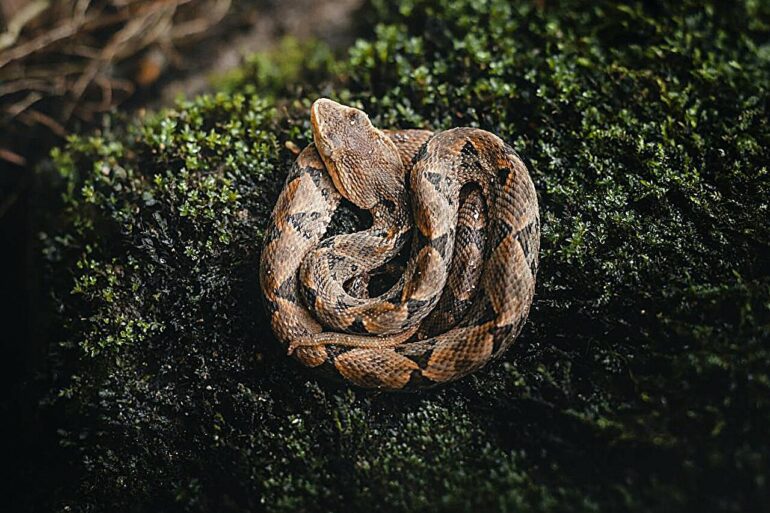In the animal kingdom, there are many grand examples of species that make sense of their world by expertly deciphering even weak signals from their surroundings.
An eagle soaring above the ground spies a river fish down below, about to swallow a bug; a hungry black bear smells a morsel of food two miles away in a dense thicket; a duck-billed platypus, swimming in a freshwater creek, closes its eyes and detects the electric impulses of a tasty tadpole nearby.
Then there are the pit vipers.
Found in a wide variety of habitats, from jungles to deserts, these snakes use powerful infrared sensors located near their nostrils to hunt for prey in the darkness by sensing even the tiniest temperature change—and they accomplish this with thermally-sensitive ion channels that are only on par with the sensory apparatus of humans.
How do pit vipers do this? A pair of Yale physicists may have discovered the answer in a new mathematical model, described in a new study in the journal Proceedings of the National Academy of Sciences.
“To locate their prey, pit vipers need to detect milli-Kelvin changes in temperature with their sensory organ, requiring the whole organ to be 1,000 times more sensitive than their underlying molecular sensors,” said Isabella Graf, a postdoctoral fellow in physics in Yale’s Faculty of Arts and Sciences (FAS).
A Kelvin is the internationally accepted base unit for measuring temperature.
“What is more, these snakes sometimes live in deserts where the ambient temperature changes dramatically between day and night,” Graf added. “How is it possible that milli-Kelvin changes in temperature can be robustly detected by vastly less-sensitive sensors in widely varying environments?”
Graf and Benjamin Machta, an assistant professor of physics at FAS and a member of the Yale Quantitative Biology Institute, say the explanation may be a biological mechanism that enables pit vipers to amplify small signals and transmit them to their brain with high fidelity.
For the study, the researchers created a mathematical model that uses concepts from statistical physics and information theory to understand how the incoming temperature signal from a pit viper’s individual ion channels collectively affects the neuronal response. Within the mathematical model, there is a “bifurcation”—a point where the neuronal response qualitatively changes and the individual, less-sensitive temperature sensors exhibit a high degree of cooperation.
“Near this bifurcation point, we show that the snake’s brain can get almost as much information about temperature as if it could read out the measurement from each individual sensor and then average them together perfectly to get one, optimally accurate measurement,” Machta said.
This is how a pit viper finds its dinner in the dead of night.
The new study also accounts for the way pit vipers maintain their thermal sensitivity amid sweeping shifts in temperature between day and night. The researchers said their mathematical model includes a “feedback” feature that automatically protects the overall sensitivity of the system throughout temperature swings.
Graf and Machta said their new model may have applications beyond the nocturnal wanderings of the pit viper.
“Similar feedback and design principles might be found in other sensory systems which also need to detect tiny signals in a varying environment,” Graf said.
More information:
Isabella R. Graf et al, A bifurcation integrates information from many noisy ion channels and allows for milli-Kelvin thermal sensitivity in the snake pit organ, Proceedings of the National Academy of Sciences (2024). DOI: 10.1073/pnas.2308215121
Citation:
Mathematical model reveals how a pit viper is able to find its dinner in the dead of night (2024, February 2)



